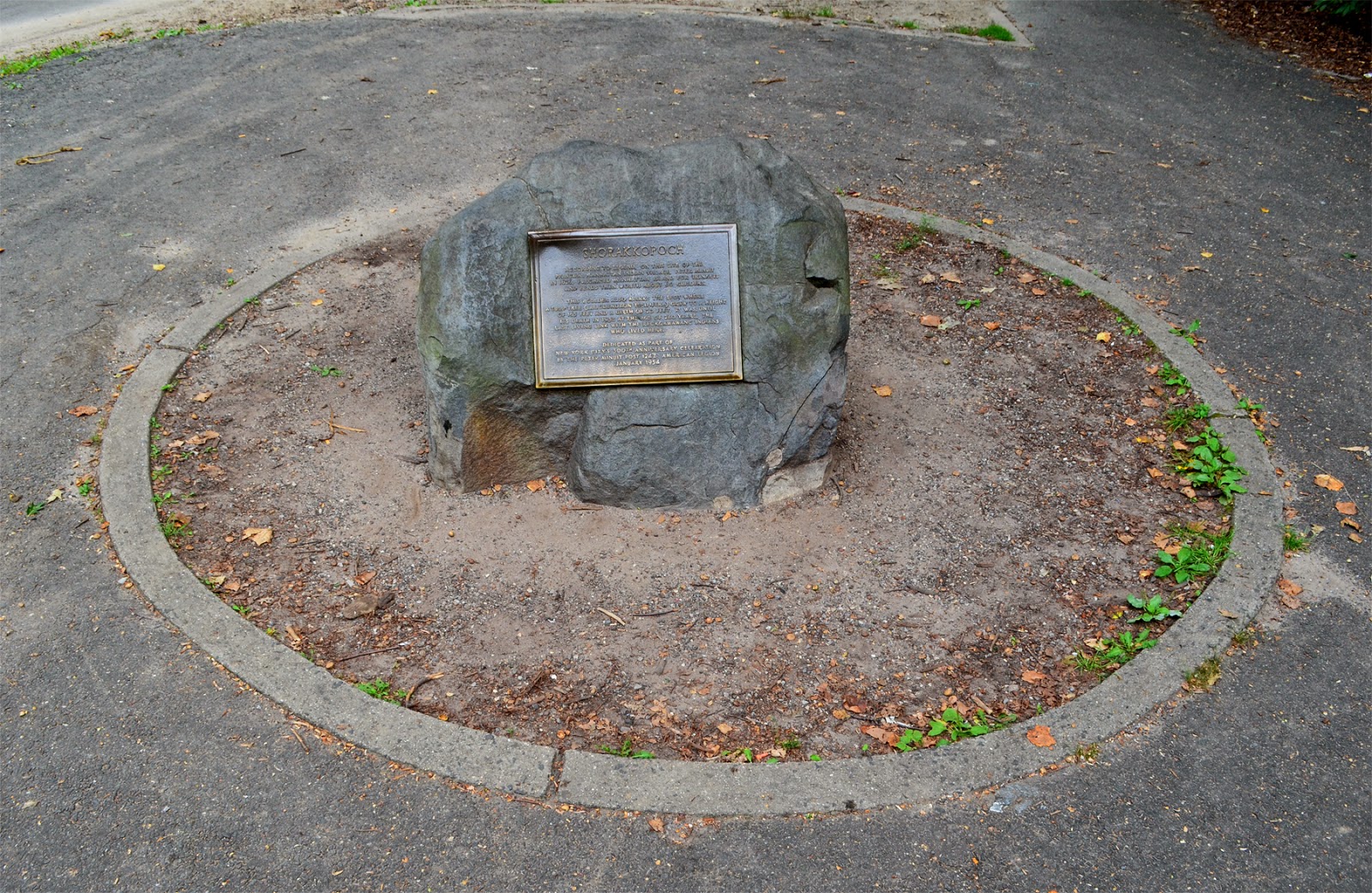In a circular path, along the main trail - near Spuyten Duyvil Creek (Dutch for "spewing devil") - is Shorakkopoch Rock, which marks the supposed spot where Peter Minuit purchased Manhattan from the local Lenape tribe, in 1626, for ornamental jewelry worth 60 guilders.
Originally, a tulip tree symbolized the exchange at that spot, but, at 220 years old, it died in 1932. Sponsored by the American Legion, a boulder and plaque were placed there in 1954.
If you walk into the hill area, eastward, you should come across a large boulder cropping, locally known as the Native American Caves.
While it is believed the Lenape tribe did use these large spaces between the rocks as gathering spots, no one has ever settled here, but a handful of homeless now and again.
New York City's largest glacial pothole is located in the immediate area, but, sadly, I couldn't find it.
After your visit, you can walk over to the creek, and admire the view of the Henry Hudson Bridge, the Bronx, and a large C, placed along the channel by Columbia University's athletics department, as their boathouse is nearby.
When you exit from this corner of the park, you'll be near Broadway and 216th Street, where you can see the Seaman-Drake Arch.
The archway was originally over the road of, and entry to, Dr. Valentine Seaman's 1855 mansion, and is the only remaining evidence of the estate. It is now the entrance to an auto body shop.
The span was constructed using Inwood marble, which was quarried from the neighborhood, is 35' (11 m) tall, and 40' (12 m) wide. Due to weathering, most of the interior has collapsed, and is now hollow.
In 1905, the property was bought by contractor Thomas Dwyer, who then changed the name of his company to Marble Arch Company. In 1938, Dwyer sold the land to the development company which built the complexes currently behind the arch.
Even though New York City Councilman Robert Jackson tried in 2004, the arch is not in the National Register of Historic Places.
In 1905, the property was bought by contractor Thomas Dwyer, who then changed the name of his company to Marble Arch Company. In 1938, Dwyer sold the land to the development company which built the complexes currently behind the arch.






